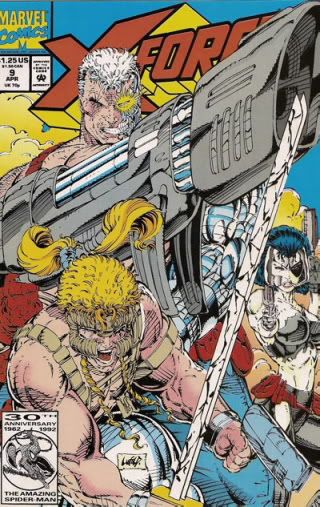I heard last week from Jonathan London that Rob Liefeld said on his Twitter feed, “Transformers 3‘ set for July 1, 2011!!! YES! I love me some robots in disguise!!!” Sure, this comment shows that he is really excited about shitty movies but it’s nothing compared to tidal wave of shit that has bubbled out of his mouth over the years. In every industry you have what professionals refer to as “assholes”. In movies there is Bret Ratner, in music there is Kanye West and in comics there is none other than Rob Liefeld. He’s not a capital “A” because he couldn’t draw an ankle to save his miserable life. There are some bad artists in comic books; it’s not a sin. Look at Greg Land, nobody is saying he’s an asshole, just that he’s a shitty artist. No, the reason Rob’s so very despised is because he had actually managed to do and say things that would have his tongue cut out in some middle eastern countries. Today we will examine some of these foibles.

ROB LIEFELD: EMBEZZLER OF MONEY:
I heard once that Rob Liefeld once sold a signed limited edition, gold foil cover of Young Blood for over a thousand dollars at a comic book show. This was of course during the mighty days of Image Comics, a company started by comic creators Jim Lee, Todd McFarlane, Erik Larsen, Whilce Portacio, Jim Valentino, Marc Silverstri and Rob Liefeld. During the span of about five years the world was under a magic spell that caused people to buy really shitty comics by the wheel barrel full. I bought them, you bought them and we all look back on ourselves with more shame than the most shameful sexual experience – the STD was the money we lost and will never get back.
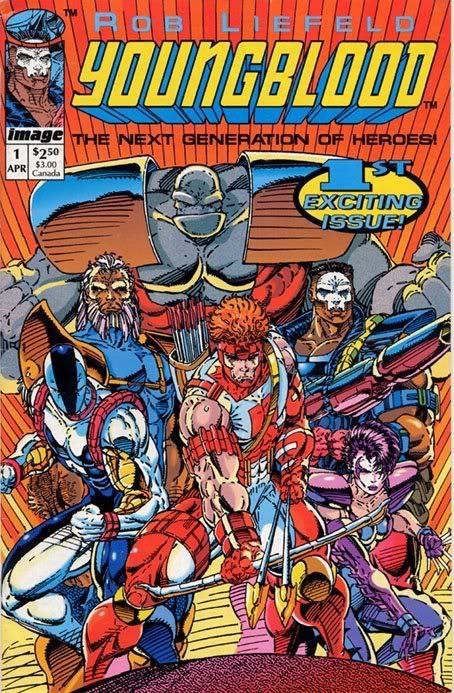
Why would someone who starred in a Levi’s commercial directed by Spike Lee and who was making millions of dollars siphon money from company funds? Because he’s a giant prick, that’s why. In June 1996, Marc Silverstri left Image Comics, taking his studio Top Cow with him like a kid taking his football back home with him. The reason was Rob Liefeld and the fact that he was paying personal debt with Image company funds. This, of course, was just the tip of the Liefeld iceberg of suck.
Rob had his own comic company called Maximum Press outside of Image Comics (Extreme Studios, Maximum Press, Awesome Comics, the man pretty much named every business venture as if he was living in his own personal Mountain Dew commercial) and had plans to move titles over from Image. He also used Image staff to do promotional and production work for Maximum. He also tried to steal artists from his fellow founders studios. He also didn’t pay many of his artists; really the list goes on and on. The Image founders voted to fire Rob Liefeld, Liefeld in return said he quit, which is usually the thing someone said then they get fired.
ROB LIEFELD GETS INTO A PUBLIC FIGHT WITH RAGS MORALES:
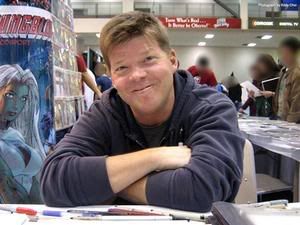
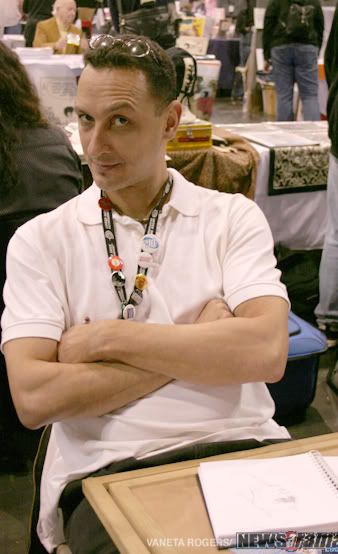
Rob Liefeld once stated that what he thought of Rags Morales and his art in the amazing miniseries, Identity Crisis (You know the story where DC heroes lobotomize a criminal for raping someone and then somebody’s wife gets murdered? If there’s rape, murder and lobotomy, you know it’s going to be good). When Rob got on a message board on Newsarama.com to defend his shitty art and comic sales to a comic fan (rising above it is something Rob just doesn’t understand, that and how to draw hands and feet.) he inadvertently opened himself to an all out attack by Morales.
Morales started by calling Rob an “artistic retard” and went on to say, “So why should I care if Rob doesn’t like my work? It’s not that I really do care, we’re different artists doing different things. But I do care about the fans and when a “professional” says something disparraging, it’s damaging. Comeuppance is required and Rob needs to know I’m not to be toyed with.”
Rob, a man as cleaver as he is talented, said, “Color me shaking in my boots. If I reacted to everyone who cracked on my work, I guess I’D BE YOU. Look me up at the next show, Rag.”
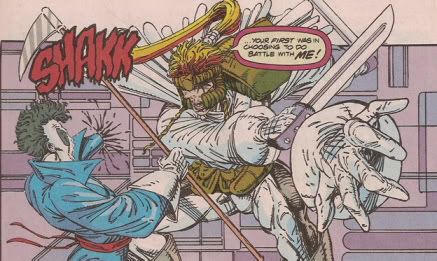
Rags finished the fight with a powerful, “Nah, you react to fans like it’s personal. I don’t. But chump hacks? No way. Give up your P.T. Barnum skullduggery and do something useful… like work. I don’t appreciate you bringing up my name negatively to draw attention to yourself. And as far as being me? I’m sure you’d lop off your right hand at the wrist to be me. If you knew what a wrist looks like.”
If this was a boxing match Rags knocked Rob’s ass out by punching him in the balls. Awesome.
ROB LIEFELD DISSES ALAN MOORE:

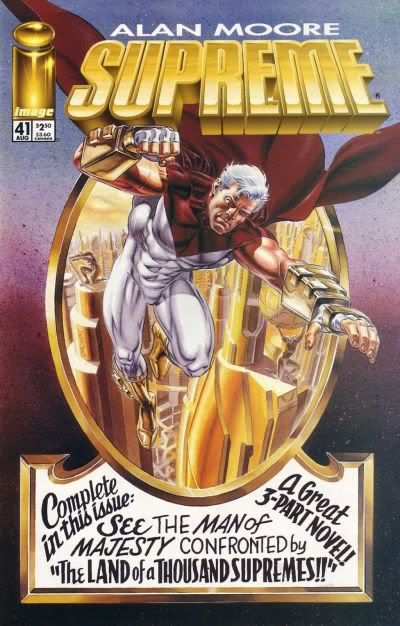
In an interview for OC Weekly, Rob Liefeld recounted working with legendary comic’s writer Alan Moore. He then went on to insult arguably the greatest writer of comic books ever. Rob Liefeld asked Alan Moore way back in the 90’s to continue the story of his Superman knock off, Supreme. Moore, who always championed independent comic creators, agreed but with the provision that he was allowed to toss out everything previously done with the character, as he believed that the comic was a steaming pile. He even won an Eisner Award for best writer for it. The follow is from OC Weekly:
“…Alan, I think had really dug what he was doing with us, because by then he’d expanded it from Supreme to Youngblood, to Glory…I still have all his original proposals, they’re a riot, dude. He’s definitely taking archetypes and doing the Alan Moore version…I called him up one time and said, ‘Hey Alan, how about we do a Teen Titans style book,’ and he went quiet and he goes ‘That’s what Youngblood is.’ I thought that was our Avengers-type book.”
“But then he took that formula and just kinda did that same thing, I mean, Tom Strong is Supreme, it’s flattering that he found his groove back with us and started winning awards back with us because people forget, he’d fallen off the map, you can’t really find a great Alan Moore book from ’90 to like ’96, when he did Supreme, even the stuff he did for Todd [McFarlane] was derided like he was asleep at the wheel, like he didn’t care because it was campy, whereas with Supreme he gave it that Silver Age with a twist, and nobody was doing that. And again, what he did for Supreme was ripped off for the next five years by all the other writers. He’s always been a trendsetter.”

I always believed that Alan Moore decided to give Rob Liefeld a break and work on his crappy book, but if you were to believe Rob Liefeld, Moore was sleeping in a gutter begging for work. Alan Moore didn’t do shit in the 90’s except for From Hell, wrote the novel, Voice of the Fire, Lost Girls, Wild C.A.T.s and started and entire line of comics under the America’s Best Comics title by the end of the decade. On a good day in the 90’s for Rob Liefeld, he drew a really big gun that looks like a metal tube, about a thousand pouches on a single belt, stole poses and a layout from a better artist and called it a day.
ROB LIEFELD HATES THE GAYS:
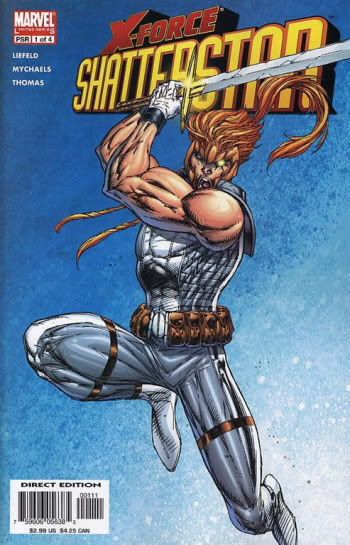
Rob Liefeld created a number of characters in the 90’s. They all had a few things in common, they were all incapable of smiling, they all had big shoulder pads and knee pads, they all had a lot of pouches and they all had stupid names. Cable, Stryfe, Deadpool, Shatterstar, they all sound like named thrown out by 6 year olds having a one-up contest on codenames before they play “soldiers” in the backyard. The vast majority of these characters were abandoned by Liefeld after only a few appearances and other writers took over.
Over the years writers have hinted that Shatterstar was more than a little queer. He never had a girlfriend, hung out with fellow X-Force teammate, Rictor, a lot, and loved to dance to Madonna. Well, in issue #45 writer Peter David decided to take the hints and make it explicit. Rictor and Shatterstar were finally reunited and it felt so good that they christened their reunion with a big gay kiss. This did not sit well with Rob Liefeld.
On his personal forums he wrote: “As the guy that created, designed and wrote his first dozen appearances, Shatterstar is not gay. Sorry. Can’t wait to someday undo this… Shatterstar is akin to Maximus in Gladiator. He’s a warrior, a Spartan, and not a gay one.” I had more than a little issue with this because Rob just got his history all freaking wrong and I’m a stickler for history (see column title). Spartans were all sorts of gay up and down, left and right and in and out (hehe). During a Spartan marriage the woman dresses in drag in boy’s clothing and waits in a pitch-dark room. The Spartan enters the room and uses the good o’l spear attack on her, the spear being his penis. He leaves her in this room to go party with his friends and they all have orgies with little boys. I am not making any of this up. Seriously.
Peter David wrote a little response: “I understand that some parents have the same reaction. They were responsible for their children’s first appearances and, when informed of their sexual persuasion, firmly declare it’s impossible, they can’t be gay.
I find particularly distressing Rob’s contention that Shatterstar can’t possibly be gay because he’s a warrior. That might come as a bit of a shock to Alexander the Great. For that matter, among his assortment of gay friends, I suppose Rob has none in the military since of course gays aren’t allowed to serve unless they keep their mouths shut. Perhaps Rob would like to see “don’t ask, don’t tell” implemented in the Marvel universe.” OH SNAP! You got knocked the fuck out, again, Liefeld!
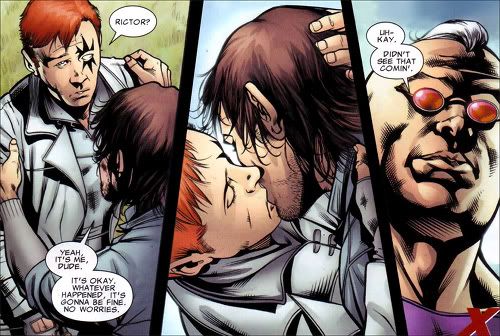
ROB LIEFELD IN CONCLUSION:
In conclusion, he’s a prick. The thing is that there had always been pricks in comics, just look at John Bryne (at least that guy has talent). Rob Liefeld, however, just doesn’t shut his blowhole. He keeps talking, laying down another brick on his personal road to Hell with every comment he makes. When he gets to Saint Peter or who ever has his job, but in Hell, he is going to look at Rob and say, “What is up with the tiny feet you draw?” I just can’t wait for the next ridiculous thing he has to say.
